Patan Durbar Square
Patan Durbar Square is an artistic hub with significant cultural, historical, and architectural marvels. It gives a glimpse of the royal history of Nepal with much of its history still intact.
Patan Durbar Square is an artistic hub with significant cultural, historical, and architectural marvels. It gives a glimpse of the royal history of Nepal with much of its history still intact.
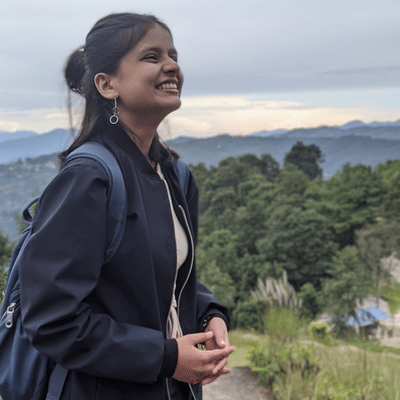
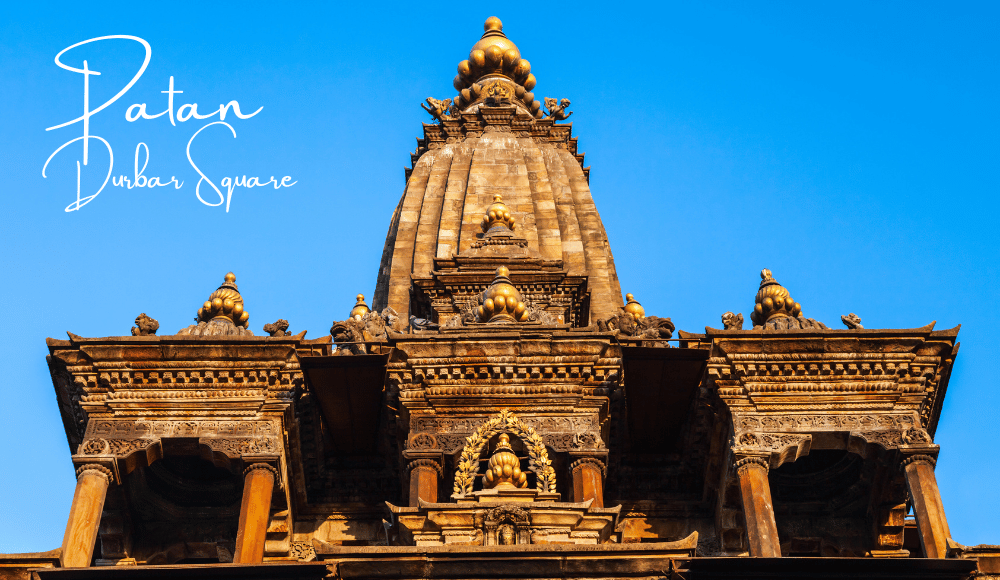
Patan Durbar Square is an architectural and cultural marvel located in the center of the ancient city of Patan, Lalitpur. It is a UNESCO world heritage site home to several ancient temples, stupas, palaces, and other structures dating back to the Malla Dynasty. The square is a living museum of Nepali art and culture, with intricate carvings and paintings adorning the walls and roofs of monuments.
Patan Durbar Square is a testament to the ingenuity and creativity of the Nepalese people. The square is a veritable open-air museum, with each building displaying a different aspect of Nepali culture, history, and lifestyle. The square is home to several palaces, including the Patan Durbar itself which was the seat of the Malla Kings and is now a museum. Patan Durbar Square attracts visitors from around the world who marvel at the beautiful architecture and learn about the city's rich history.
One of the striking features of Patan Durbar Square is the presence of numerous temples and shrines, each with its unique style and history. Krishna Mandir, for example, is a beautiful structure with a golden roof and intricate carvings on its stone walls. It is a popular place for Hindus to offer prayers and seek blessings from Lord Krishna. Patan Durbar also has the Temple of Taleju, dedicated to the guardian deity of the Malla Kings.
The history of Patan Durbar is closely related to the history of Patan city itself. The city was founded by Emperor Ashoka of India in the 3rd century BCE and was named Lalitpur, literally translating to “city of beauty” in Sanskrit. In the 12th century, the city came under the rule of the Malla Dynasty, which would rule Nepal for the next six centuries. During this time, Patan became an important cultural and artistic center, and many of the buildings in the square were constructed during this period.
After the earthquakes of 1934 and 2015, Patan Durbar Square has gone through numerous changes. The earthquake of 1934 completely obliterated many ancient buildings in the square, including Bhaidega Temple, originally built in 1678. However, the square has been quickly rebuilt and is in the final stages of restoration to its former glory. Due to communal and national efforts, Patan Durbar Square is a thriving cultural and artistic hub. It is a must-visit destination for anyone traveling to Nepal.
In this article, we will go through everything there is to know about Patan Durbar Square including its history, cultural and religious importance, architectural excellence, and a lot more.
|
Monument |
Patan Durbar Square |
|
City |
Patan |
|
District |
Lalitpur |
|
Province |
Bagmati Province |
|
UNESCO World Heritage Site listed |
1979 |
|
Founded by(the city) |
|
|
Major Attractions |
|
|
Major Festivities |
|
|
Entry Fees |
|
Patan, also known as Lalitpur, was founded by Indian Emperor Ashoka in the 3rd century BCE. In the same era, the Kirat Dynasty made Patan their capital city. It was initially named Lalitpur, translating to “city of beauty” in Sanskrit. Over the years, it has been known by many names such as Upgram, Lallit Patton, Maningla, etc. The history of Patan Durbar Square and the city itself are closely intertwined. It is considered the oldest among the three durbar squares of Kathmandu Valley; Patan, Bhaktapur, and Kathmandu Durbar Square.
The Lichhavi Dynasty later conquered the city in the 4th century CE, and the square was expanded and renovated by them. During the Malla Period(1200-1769 CE), Patan became an important cultural and artistic center, and the square was further developed and adorned with numerous temples and shrines. The Malla kings were also responsible for the construction of the famous Krishna Temple, which is located in the square.
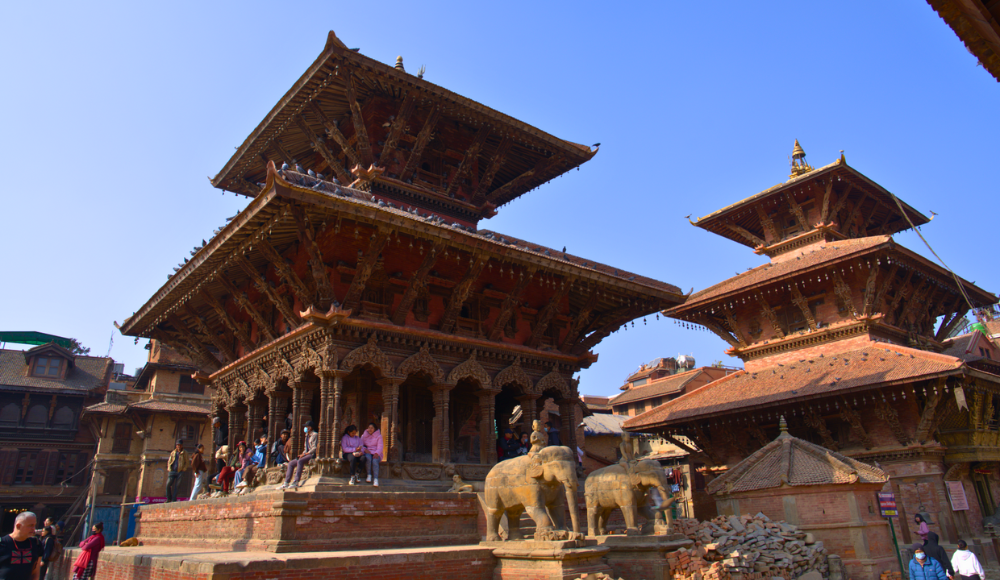
The Royal Palace of the Malla Kings was built in the 16th century by King Siddhi Narsingh Malla. It is a three-story building, still standing tall and proud, which was used as a residence of the Malla Kings for over a century. The palace is now used as a museum and is open to the public. The museum teleports you to the past with all the statues, paintings, and designs from that era.
King Siddhi Narsingh Malla also built the most famous temple of the Patan Durbar Square; the Krishna Mandir. It dates back to the 16th century and is dedicated to the Hindu deity, Krishna. The Krishna Temple is famously known for its 3 tiered structure with 21 Gajuras. The temple has stone-carved depictions of Lord Krishna, his consorts, and Lord Shiva too.
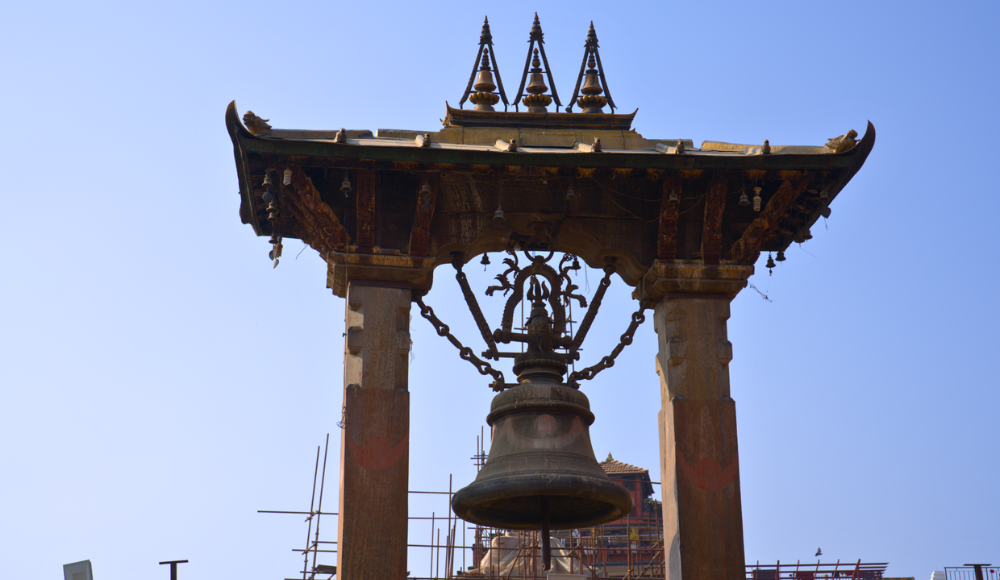
Patan Durbar Square is rich in ancient shrines and architecture. It includes the Golden Temple, Mahabuddha, Jagannath Temple, Taleju Temple and so much more. The square is also home to many workshops where artisans work on traditional crafts such as metalwork, wood carving, and pottery. These crafts have a long history in Nepal and are an important part of the country’s artistic and cultural heritage.
Patan Durbar Square is made in ancient Newari architecture with several Shikhara-style and Pagoda-style temples. Newari architecture can be seen around the residential area and in the palace itself. Pagoda-style temples are characterized by their multi-tiered tower-like structures. We can see this style in Kumbeshwor temple, Degutale temple, etc.
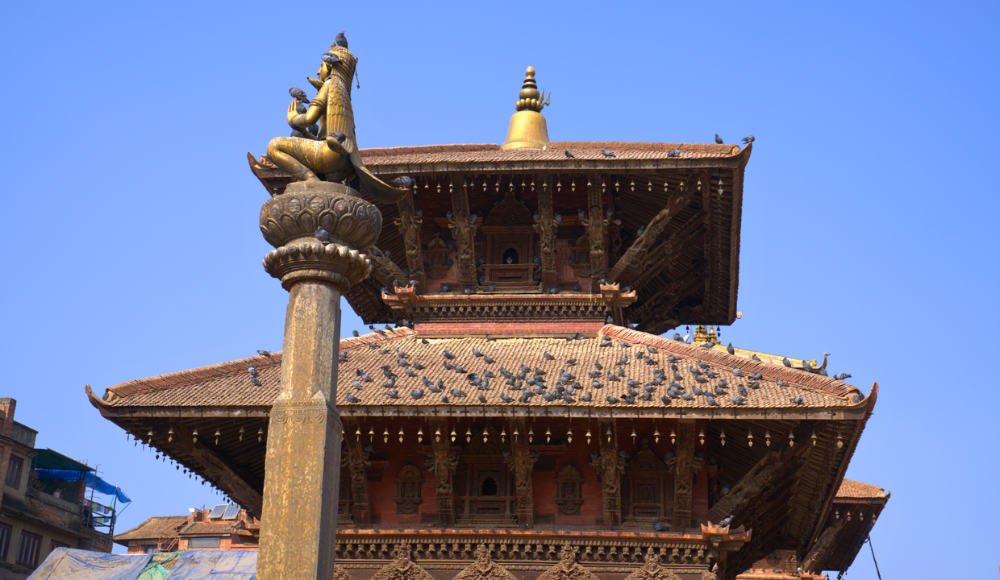
The most popular temple of Patan, Krishna temple is built in Shikara style architecture. Brought to Nepal from North India, the Shikhara style is known for its tall, spire(tree/grass) like tower rising above the main sanctum. The top of these temples is usually decorated with a Kalasha, a sacred vessel representing the Meru mountain.
The combination of these architectural styles in Patan Durbar Square creates a unique and harmonious blend of traditional Hindu and Buddhist elements, making it a must-see destination for architecture enthusiasts and history buffs.
Some believe that having been to Kathmandu or Bhaktapur Durbar square, visiting Patan is not worth their time. That could not be further away from the truth. Yes, all of these Durbar Squares share something in common, but they all have their unique specialties. Not visiting them all when you have the chance, you might miss out on some great opportunities to learn about different aspects of the history and culture of Nepal AND those specific places. Let's take a look at Patan Durbar Square's major eye-catching sites.
The Royal Palace, also known as the Patan Durbar, is a beautiful palace complex located in Patan Durbar Square. It is a stunning example of Newari architecture and was built in the late 16th century as the seat of power for the Malla kings who ruled the country at the time. The palace served as the royal throne for over a year up until the Malla kings were thrown out of authority.
Patan Durbar has several temples and palaces, including theTaleju Mandir, a temple dedicated to the guardian deity of Malla kings. You will be mesmerized by the beautiful architecture and details on the exterior and interior of the Palace alike. The exterior of the palace has detailed delicate carvings and stonework of the heavenly deeds of several deities. All walls have a story to tell. The palace itself is an ode to the extraordinary artists of the city.
The palace complex is made up of several courtyards, each of which is home to a different temple or resting Chaupaaris. The main palace building is a three-story structure that was once the residence of the Malla kings. The palace is now turned into a museum, which displays a collection of traditional paintings, bronze statues, and weapons.
Visitors can explore the palace and learn about the history and culture of the city of Patan. Overall, Patan durbar is a beautiful and historic attraction that is well worth visiting for anyone interested in the Nepalese monarchy, culture, and history.
The Patan Museum is housed in a beautiful building that was once part of the Royal Palace complex. It displays a range of artifacts that give visitors an insight into the life and times of the Malla kings who ruled over the city of Patan. The museum also has a collection of traditional paintings depicting Hindu mythology scenes. At the entrance of the museum, you can get a brochure detailing the sites inside the museum.
In addition to its collection of artifacts and paintings, Patan Museum also has exhibits that allow visitors to learn about the history and culture of the city in a hands-on way. The exhibits, ranging from A to H consist of a general introduction, royal artifacts, architectural processes and significance, Hindu deities, Buddhist hand gestures, their meanings, and so much more. The exhibits display the development phases of not only Patan but also all of Kathmandu Valley.
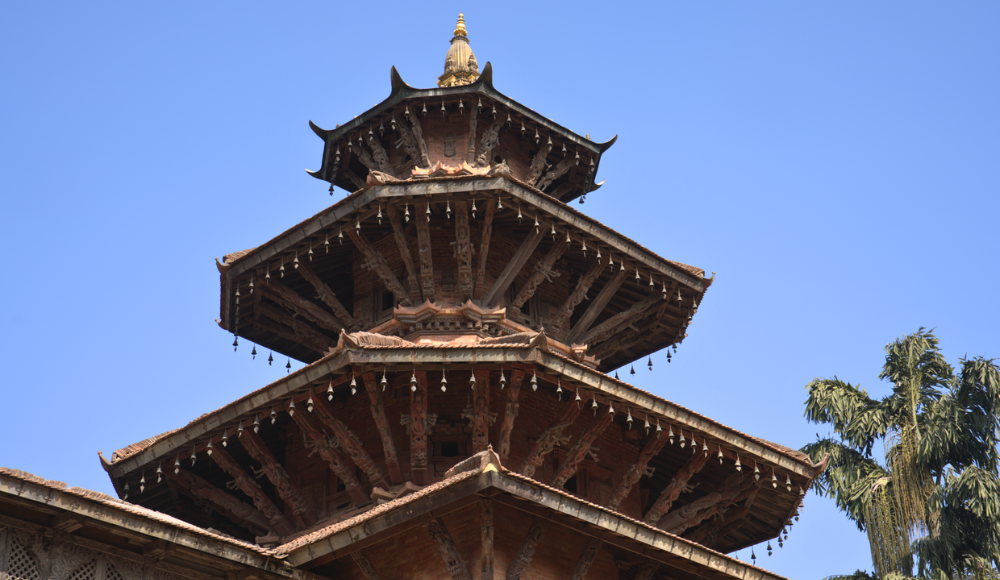
The interior of the first floor of Mulchowk has Architecture Galleries, an ongoing extension of the Patan Museum. Historical windows, columns, struts, and other artifacts are displayed in a typological order, accompanied by drawings and written commentary. Once the gallery is completed, it will have a multimedia room showcasing architectural drawings, historic paintings, and their restoration processes.
The Bhandarkhal water tank, which serves as the centerpiece of the garden behind the palace, was constructed in 1647 to serve as the major water storage facility for the durbar. A meditation pavilion, a tiered terrace, two stone lions, a carved stone spout, and relief sculptures from the 17th century are all the tank's construction features. The tank is linked to Patan's ancient water systems, which use clay tubes to transport groundwater from neighboring sources. Up until a significant renovation in 2012, the tank had dried up and was in ruins.
If you are looking to have a laid-back look at the history of the whole valley in a single place, Patan museum is the place for you. We recommend you visit on a weekday during office hours to avoid crowds and hence have a thorough look at all of the museum components. Do keep in mind that videos are prohibited inside the museum. Make sure to separate a couple of hours for the museum only and have a fun trip!
The Golden Temple in Patan Durbar Square, also known as Hiranya Varna Mahavihar, is a Buddhist temple located in Patan, Nepal. It was first founded by King Bhaskara Dev in 1045 and then was built in its current form in 1409. The Golden Temple, locally known as Kwa Bahal, is a three-story temple with golden delicate decorations and is considered the oldest temple in Patan. Inside the temple complex, you will find astonishing craftsmanship all around you. Inside, there is a large courtyard surrounded by smaller shrines of Gautama Buddha. The main shrine contains a tall golden image of the Shakyamuni Buddha, which is the source of the temple’s name. The temple also consists of a library that holds ancient Buddhist texts and scriptures.
The entrance is guarded by two large elephant-riding soldiers. While you can photograph around the interior of the courtyard, you are prohibited from taking any pictures or videos inside the shrines unless you have explicit permission. If you are inside the monastery of Hiranya Varna Mahavihar, be sure to keep quiet and not disturb any meditating person. Inside the main courtyard, there are several artifacts unique to the Golden temple. You can have a look at the history of Patan without actually visiting the museum. It is enough to keep any historians happy for a day. Be sure to be mindful of your surroundings and wear no leather items. As the temple is outside Patan Durbar Square, you will have to pay an extra ticket fee of around NRs 50.
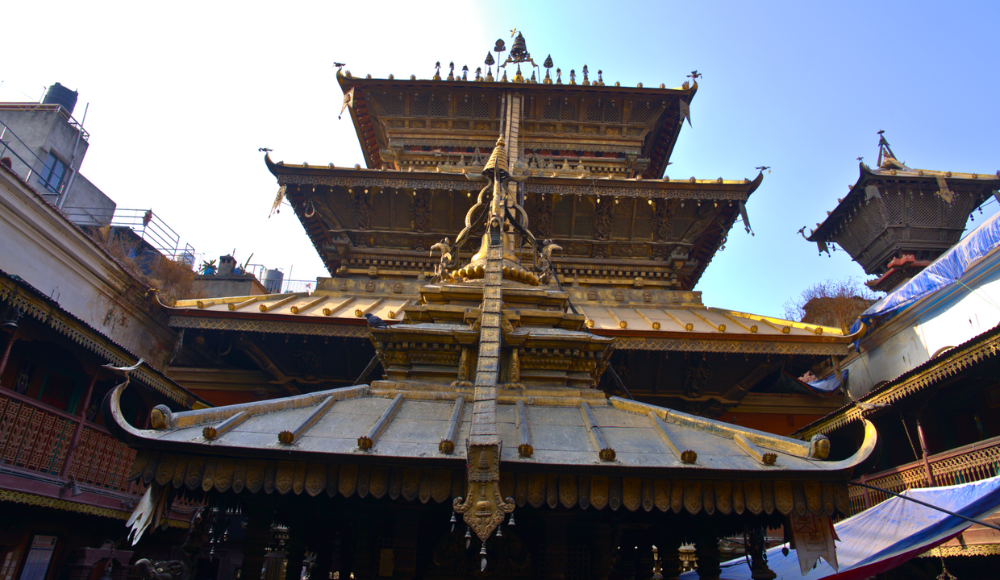
The Mahabuddha temple, also known as “The Temple of Thousand Buddhas”, is a beautiful Buddhist temple dedicated to Siddhartha Gautama. The temple was allegedly built between the late 16th century to the early 17th century, initiated by priest Abhaya Raj of Patan and continued by his five sons. Abhaya Raj took inspiration for this temple during his visit to the Mahabodhi Temple in Bodhgaya, India. The temple had to be completely reconstructed after the 1934 earthquake without a proper blueprint of its previous architecture. That led to the loss of its original design except for the terracotta bricks with Buddha imprints. The Mahabuddha temple again suffered some small damages in the 2015 earthquake.
All the terracotta bricks used in the construction of Mahabuddha have images of Buddha imprinted on them, hence inspiring the name “the temple of a thousand Buddhas”. This Shikhara-style temple is in the southwest of Patan, crammed in among the residential communities. It has five stupa-shaped golden zeniths, each symbolic of five basic elements. Currently, the Mahabuddha temple is covered in scaffoldings, still recovering from the 2015 earthquake. Even though it still stands tall and proud with minor damages, the renovation hasn’t been completed as of now. You can still have a look at the exterior tiles and admire this architectural marvel. The ticket is covered by the ticket to the nearby Uku Bahal, which amounts to NRs 50.
The Krishna Temple is one of Nepal's most famous and beautiful temples located inside the Patan Durbar Square. Dedicated to the Hindu god Krishna and Shiva, it is an important site for Hindu pilgrims. Its construction started in the late 16th century and was initiated by King Siddhi Narsingh Malla (completed at around 1637 CE), allegedly after he saw a dream of Radha and Krishna standing on that spot.
Located in front of the Patan Durbar, Krishna Mandir displays the astounding craftsmanship and artistic excellence of the Malla era. In Nepal, temples are usually dedicated to a single deity with smaller shrines for other deities. But, the Krishna Temple has two idols, Krishna and Shiva, with equal importance. The first tier of this three-tiered temple is dedicated to lord Krishna, the second floor to lord Shiva, and the third floor to lord Avalokiteshwora. (Lokeshwora)
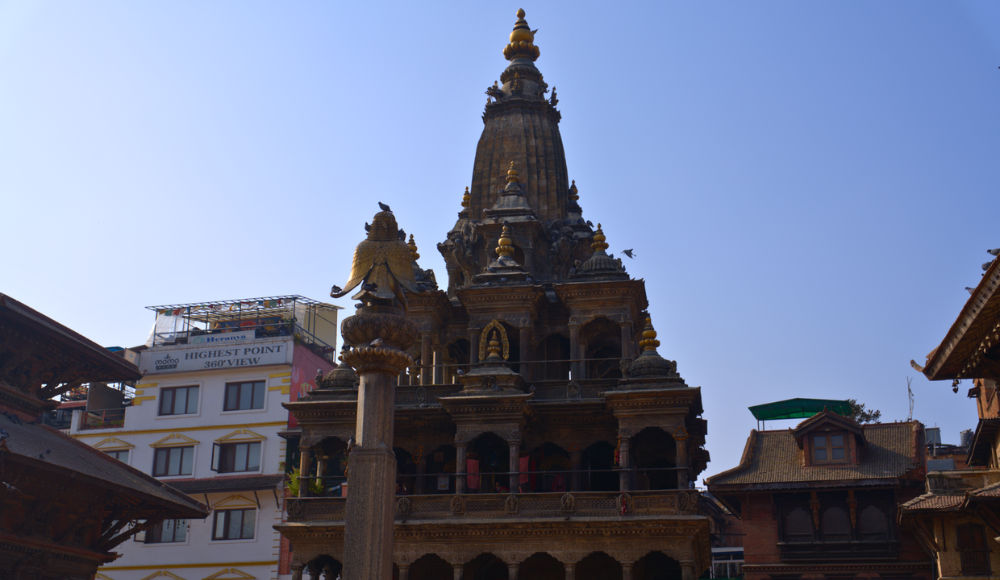
Non-Hindus are not allowed inside to view the statue of lord Krishna. However, you can still enjoy the outer decorations and architecture of the temple, often listening to the temple musicians playing upstairs. In the column in front of the Krishna Temple, you can see a statue of Garuda, a man-bird and Vishnu’s mount, kneeling towards the temple entrance.
The beams of the first and second floors of Krishna temple display delicate carvings demonstrating the events of Maha Bharata and Ramayana in Newari scriptures respectively. The rest of the temple floors are covered in ornate decorations with 21 gajura spread out in all directions and Shikhar-style architecture. The inner walls are equally extravagant and covered in beautiful paintings and stone carvings. Krishna Temple suffered substantial structural damage from the earthquake of 2015, specifically in its upper levels. However, it was quickly restored and reopened to the public in 2018.
Often overshadowed by the nearby Golden temple, Kumbheshwor temple is one of the only two five-story temples in Nepal, the other one being Nyatapola temple in Bhaktapur. It was built in the 14th century by King Jayasthiti Malla making it one of the oldest in the vicinity. Even though it is not so well-known to tourists, several people, locals and pilgrims alike, visit this temple every day to worship lord Shiva and do their daily rituals.
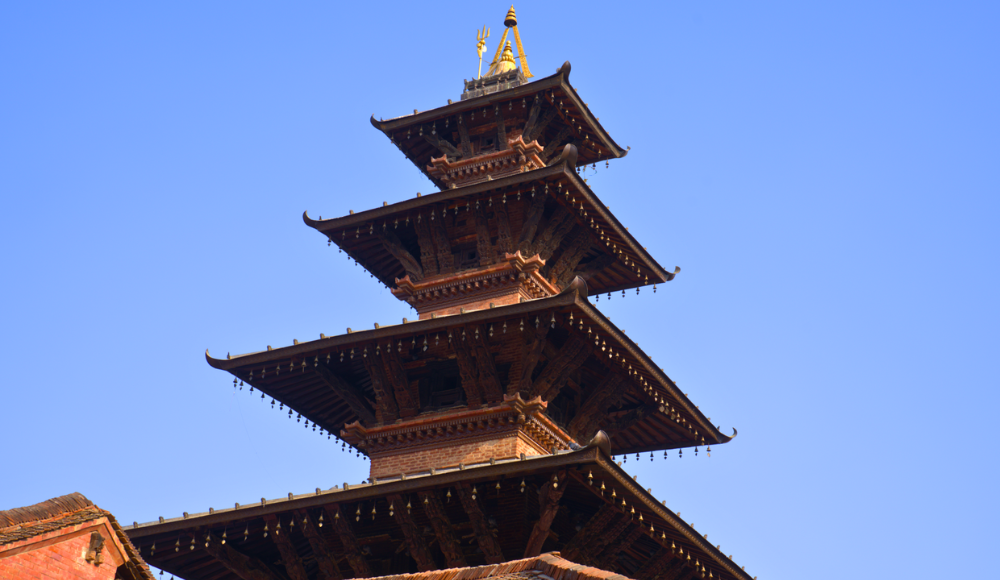
The temple complex has several features worth looking out for. The two-hitis (water basins) supposedly have Himalayan water flowing in them, the same as that of the holy Gosaikunda Lake. People who cannot visit Gosaikunda due to various reasons go to the Kumbeshwari temple to take a holy bath in one of the two Hitis. The smaller Hiti is considered the more holy of the two. How much of this is true is up for debate.
There is also a fire sacrifice area. The temple itself is splendidly architectured and holds numerous rituals every day. There may be some rituals you don’t like, but you must be respectful of the local culture and traditions. In front of the main temple, you can see Nandi, Shiva’s mount, kneeling from the temple. Inside the temple complex, there are other two smaller temples of Bagalamukhi and Ulmanta Bhairab. The main Kumbeshwar temple started leaning after the earthquake of 2015. Some minor renovations were done in 2017 and all the compound area was repainted. If you want to experience the local day-to-day culture, Kumbheshwor temple is the place for you.
Inside the Patan Durbar complex, there are three courtyards namely, Keshav Narayan Chowk, Mulchowk, and Sundari Chowk. These complexes include impressive shrines and historical places with intricate carvings and designs. Keshav Narayan Chowk is the oldest of the three royal courtyards, believed to have been built on the platform of an old Buddhist monastery. It is located right in front of the Patan Museum entrance. Mul chowk, translating to “main courtyard”, is the heart of Patan Durbar and the hub of its ritual activities. It is the largest of the three courtyards of Patan and is larger than the Mul chowks of Kathmandu and Bhaktapur. The courtyard features historic tile paving from the 17th century. Mulchowk houses the Golden Doorway, the entrance to the Taleju Shrine. The doorway is a fine example of the metallurgical arts of Patan.
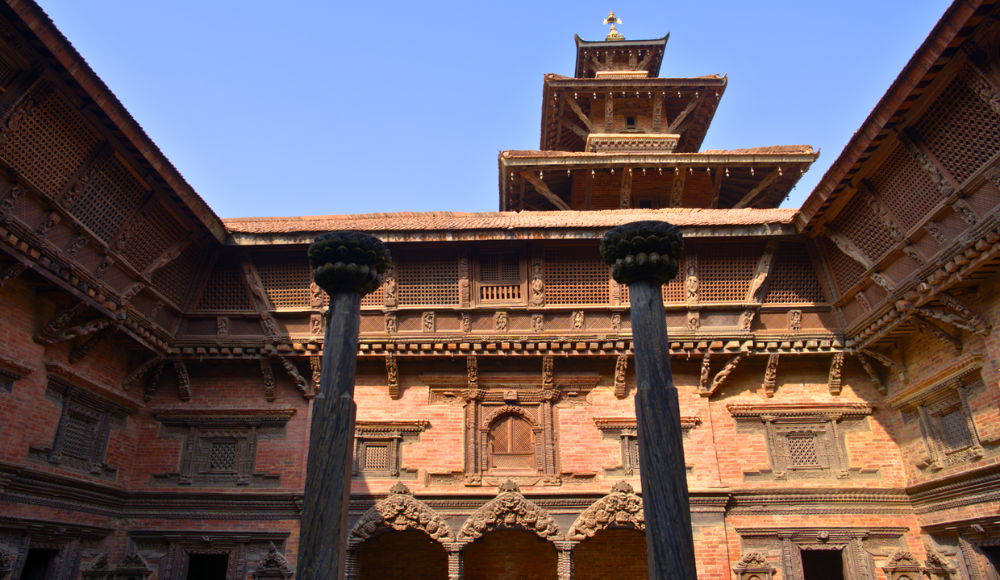
The ensemble consists of three main components made up of copper: a door, an ornate torana(tympanum), and two life-sized sculptures of Ganga and Yamuna, goddesses representing the two most sacred rivers of Hinduism. Yantaju shrine, dedicated to goddess Yantamode, an Ishta Devta (personal deity) of Malla kings, accompanies the Taleju temple in Mulchowk. Sundari chowk, the smallest and the prettiest of the three royal courtyards, is located on the southern edge of the palace. The entrance to Sundari chowk is guarded by statues of three Hindu deities, Ganesha, Hanuman, and Narsimha. The Tusha Hiti step-well is in the center of Sundari Chowk and is furnished with a bronze spout supporting an image of Laxmi-Narayan on Garuda.
The oval-shaped, Tusha Hiti step-well also known as the Royal Bath was commissioned in 1647 by King Siddhinarsimha Malla. Its walls are divided into registers (Khwopa) each fitted with a tantric divinity carved in stone or bronze. A miniature replica of the Krishna Mandir sits on its axis with a protective serpent encircling the periphery. All of the royal courtyards faced substantial damage in the 2015 earthquake. They went through painstaking reconstruction and restoration. After complete restoration and upgrades, the royal courtyards reopened to the public in 2018.
Located inside the Kumbheshwor temple complex, opposite to the main Kumbheshwor temple, the Bagalamukhi temple is dedicated to goddess Parvati, consort of Lord Shiva. Bagalamukhi attracts devotees all year round, as Parvati is associated with Shakti, the female form of power. It is believed that her homage strengthens one against enemies. The temple is especially crowded on Thursdays and Saturdays as it is considered the day of Bhagwati. According to the legends, a demon named Bagala tortured and threatened the lives of people. Those people then turned to goddess Parvati and worshiped her to come to their rescue. Pleased by the prayers, she killed the demon and rescued the people. Hence, the people built the temple in tribute to the goddess and she was named Bagalamukhi.
Although the main temple of the goddess is small, the temple premises are very wide and open. It is one of the most popular Hindu temples in Kathmandu and is visited by hundreds of devotees every Thursday to keep evils away and to succeed in their professional and personal lives.
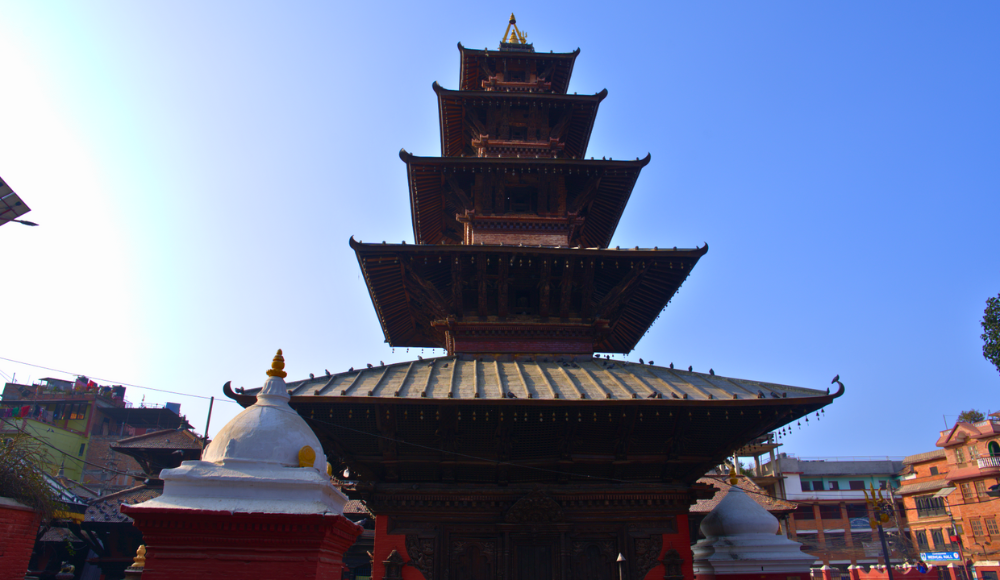
Patan Durbar Square is located in the heart of Patan city in Lalitpur, Nepal. It is situated just south of the capital city, Kathmandu. You can easily navigate to Patan from different starting points which we have briefly explained below:
The easiest way to get to Patan Durbar Square from any part of the valley is to take a taxi or ride a public bus from your starting point to Lalitpur. A taxi will drop you right at one of the entrances of the square while you will have to walk a little if you choose to ride a public bus. The bus will drop you at either Pulchowk, Jawalakhel, or Lagankhel.
It is a straight 10-20 minute walk from either of those points, walking through the alleyways lined with souvenir shops and other stores. The time you’ll take to reach there will vary according to the traffic conditions but usually takes only about 40 minutes from Kathmandu to reach one of the stops on a public bus.
It is recommended to check the traffic conditions before planning the trip as traffic in Kathmandu can be unpredictable. Also, it's always good to have a map or guide with you to reach the destination.
Note: Riding a bike to Patan Durbar Square is another more fun and economic option for you to reach there. Patan, unlike other cities of Nepal, has a separate lane for bicycles making it safer for the riders. You can easily find bicycle rental shops all around the city.
As rich as Patan Durbar Square is in its fine arts and architectural heritage, it is equally rich in cultures and festivals. Patan celebrates a Jatra or a festival almost every month, sometimes multiple celebrations a month, all year round. It is to no one’s surprise considering how much the Newar community loves their festivals and Bhoj. The major festivals celebrated in Patan include:
|
S.N. |
Festival Name |
|
1. |
Rato Machhindranath Jatra/Bhoto Jatra |
|
2. |
Gai Jatra |
|
3. |
Bhimsena Jatra |
|
4. |
Astamatrika Dance |
|
5. |
Krishna Janmastami |
|
6. |
Mataya Festival |
|
7. |
Samyak Mahadan (Every 5 years) |
Here, we will discuss the first three festivals in this list known to represent Patan.
The Rato Machhindranath Jatra, also known as the Bunga Dyah Jatra, is one of Patan's most important religious celebrations and the country's longest chariot festival. It is celebrated alongside Bhoto Jatra dedicated to the Serpent God. The god Rato Machhindranath is said to be brought from Assam to Kathmandu during a period of severe drought in the valley. The deity then granted rain in the valley and has been revered as the god of rain ever since.
The festival begins with the construction of a chariot for Rato Machhindranath. The chariot is made of wood, using centuries-old designs, and decorated with colorful paintings and depictions. The idol of Rato Machhindranath is placed inside the man-made chariot and pulled to different Patan localities. The chariot is pulled through the streets of Patan by devotees, accompanied by music and dancing.
Throughout the festival, devotees make offerings of food and flowers to Rato Machhindranath and other deities associated with the festival, such as Bhairav and Taleju. In addition to the religious rituals, the festival also includes cultural events such as traditional music and dance performances. You will also see several food and market stalls selling traditional handicrafts and souvenirs.
At last, the chariot is brought to Kumari Ghar where the Kumari of Patan will worship the chariot and the idol of Rato Machhindranath before departing it for the temple. After the chariot reaches the temple, the festival concludes with a final ceremony, where the god's statue is taken inside the temple for the year, and the chariot is dismantled for next year's festival.
Overall, the Rato Machhindranath Jatra is a colorful festival combining religious devotion with cultural celebration and community. It is a time for people to gather and celebrate their shared culture and heritage, and seek blessings from Rato Machhindranath, the rain deity.
Gaijatra is a vibrant and lively festival celebrated by the Newar community in Nepal, primarily in the Kathmandu Valley. The festival, held annually in the month of Bhadra (August-September), marks the end of the monsoon season and has its roots in the Malla dynasty. King Pratap Malla started this celebration to cheer up his wife when she was unconsolable because of their son’s death. It was the only day of the year when commoners could make jokes about the royalty without any punishment.
At the heart of the celebration is a lively procession of cows (or people dressed as cows and other odd figures) through the streets of Patan, adorned with garlands and paint, and accompanied by a large crowd dressed in traditional Nepali clothing. The parade is led by traditional musicians and followed by a parade of people in various costumes, including clowns (Lakhe), dancers, and actors.
Gaijatra is a festival of remembrance for the deceased, where families visit temples to offer prayers and make offerings to the dead. It is a time for families to come together and remember loved ones who have passed away. Gaijatra is a community-wide celebration with a strong element of humor and satire, which is believed to help confront death and fear of death.
In Patan, the Gaijatra celebration is followed by Neku Jatra-Mataya, also known as "The Festival of Lights". This festival is celebrated with great enthusiasm, featuring a Newari musical group that visits all temples and courtyards at midnight, leaving rice husks and coins behind. The procession then follows those marks to complete the Jatra over several days. The procession must visit all 1400 private and public votive shrines for the Jatra to officially conclude.
Gai Jatra has gained popularity as a tourist attraction in recent years, luring travelers from all over the world to watch the vibrant march and take in the distinctive culture of the Newar population of Patan.
Bhimsen Jatra is an annual festival celebrated in the city of Patan, Nepal, in honor of Bhimsen, the Hindu god of trade and business, one of the Panch Pandava. The festival is held in the month of Bhadra(August-September) and is a celebration of Patan's god and business community.
One of the major highlights of Bhimsen Jatra is the procession of the idol of Bhimsen through the streets of Patan. The idol is carried on a chariot, accompanied by a crowd of devotees and Nava Baja (traditional musical arrangement). This is a time when the business community of Patan comes together to pay their respects to Bhimsena and ask for his blessings for a prosperous year ahead.
The Lakhu Dhau Dance is the most spectacular aspect of Bhimsen Jatra. This traditional Newari dance, performed by young men in vibrant, colorful costumes, is believed to bring good luck and prosperity when accompanied by traditional music. The dance takes place in front of the Bhimsena temple in Patan Durbar Square and is performed not only by the dancers but also by locals. It's a unique and lively performance that adds color to the festival.
In addition to the traditional rituals, Bhimsen Jatra also features cultural performances such as traditional music, dance, and street plays. Many merchants and traders participate in the festival by setting up stalls and offering prayers to the god. They believe that by doing so, Bhimsen will bless their business and trade, bringing them prosperity and success.
In conclusion, Bhimsena Jatra is a celebration of the business community that provides an opportunity for people to come together and celebrate their culture and traditions regardless of their age and background.
Patan Durbar Square is home to many significant temples and shrines that reflect the city's rich religious heritage. The temple of Lord Krishna, situated in the square, said to be the oldest in the Kathmandu Valley, is an important religious site for Hindu worshippers. The temple also has shrines for the Hindu Lord Shiva and Buddhist god Avalokiteshwora alongside Lord Krishna.
The square also houses a temple dedicated to the Hindu god Bhimsen, who is the god of trade and business. The temple is celebrated annually with the Bhimsen Jatra and is an important religious site for Hindu worshippers. The temple of Taleju Bhawani, dedicated to the goddess Taleju and the temple of Lord Vishnu and his consort Laxmi are also significant religious sites in the square.
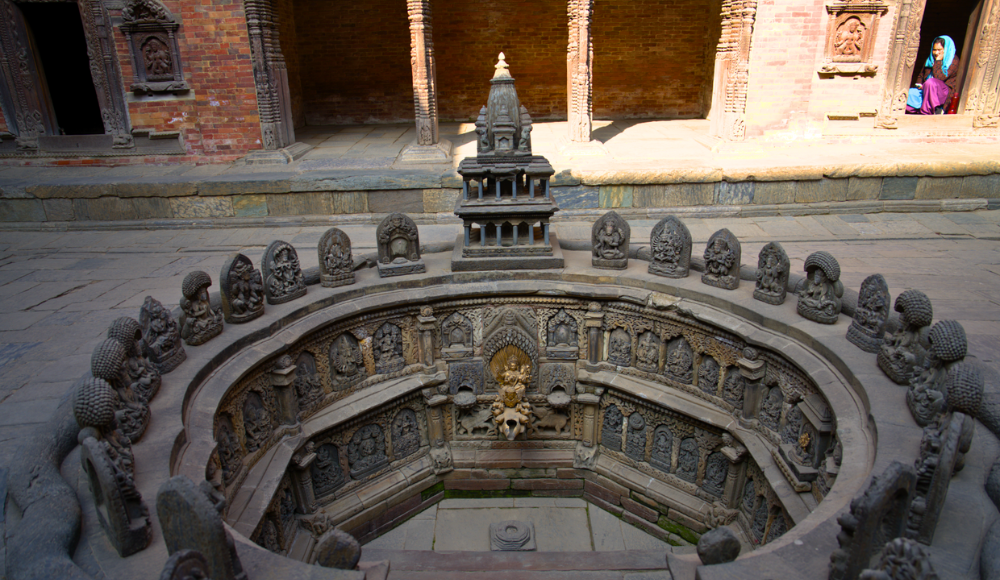
The square is also a significant site for Buddhism, with the Kumbheswar Temple being an important religious site for the Kirant as well as Hindu devotees. This temple, considered one of the only remaining pre-Licchavi pagoda temples in Nepal, represents the coexistence of different religions in Patan and the city's religious diversity.
In conclusion, Patan Durbar Square is a religious and cultural center that reflects the city's rich heritage, with many significant temples and shrines for Hinduism and Buddhism. It serves as an important religious site for the people of Patan and visitors alike.
Patan Durbar Square is a cultural gem that offers a glimpse into the rich cultural heritage of the Kathmandu Valley. The square is home to a collection of temples, palaces, and shrines that date back to the 14th century, and it continues to be a major center of culture and religious activity to this day.
Patan Durbar Square is a significant center of Newari culture, the indigenous culture of Kathmandu Valley, with its unique language, customs, and traditional arts. The square is home to many traditional Newari houses, some open to visitors and offering a glimpse into the traditional way of life.
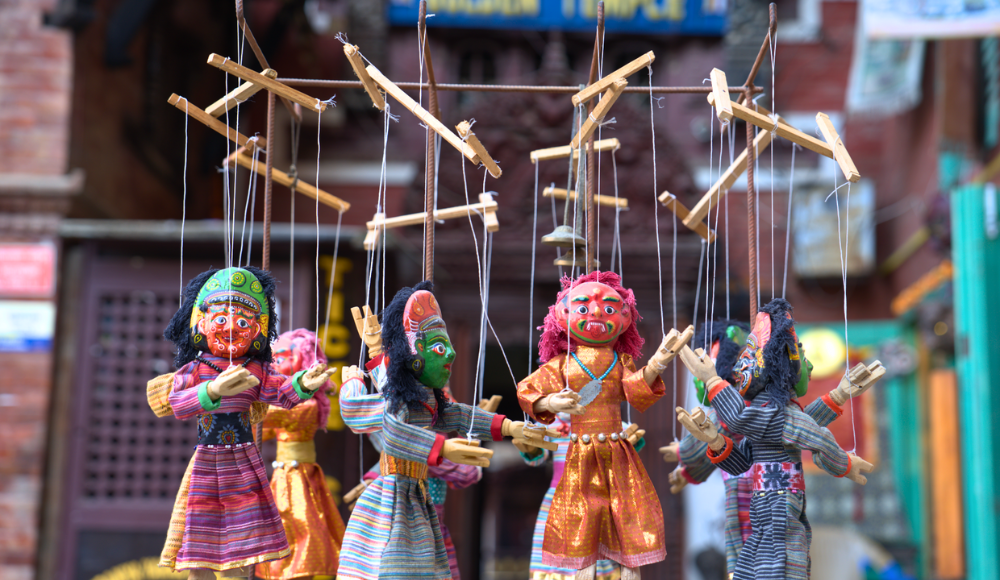
One of the most striking features of Patan Durbar Square is the wood carvings and metalwork of gods and goddesses, mythical creatures, and scenes from Hindu and Buddhist mythology. These carvings are not only beautiful, but they also serve as a reminder of the deep religious and cultural beliefs that have shaped the Kathmandu Valley for centuries.
You will be left wide-eyed by all the diverse cultural traditions that the locals admire and practice with each festival in Patan. Each event has a set of its history and a legend tied alongside it. The culture and traditions of Patan Durbar Square are one of the oldest in the country, always brought to life by lively music, art, dances, traditional clothes, and processions.
Overall, Patan Durbar Square is a cultural treasure trove that offers visitors a chance to experience Nepal's rich history and culture. You can learn so much about the traditions and festivals of Kathmandu valley in this single place. From the intricate wood carvings and metalwork to the traditional houses and Newari festivals, the square provides a glimpse into the vibrant cultural heritage of the Kathmandu Valley.
It is best to visit Patan Durbar Square typically early in the morning or late in the afternoon. Visiting during these times allows you to avoid the heat of the day and the crowds of tourists and provides the best light for photography. It also helps avoid the office rush hours of traffic.
In the early morning, the square is relatively quiet and peaceful, and you'll have a chance to see the temples and palaces in a more intimate setting. Late afternoon is also a good time to visit, as the light is softer and more golden, which makes for great photography.
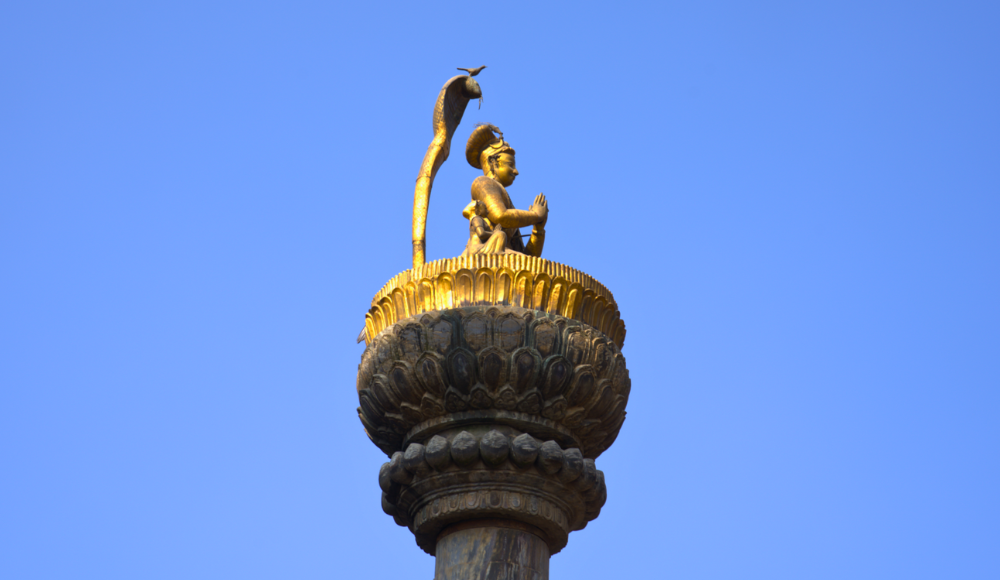
If you are more into observing the hustling lively square, you can visit during peak hours (10 am onwards) on weekends. It's also worth noting that the square is closed on certain days for various ceremonies and festivals, so it's essential to check the schedule before planning your visit.
The best time to visit Patan Durbar Square is subjective and depends on your preference. If you want to experience the quiet and intimate setting of the square, early morning and late afternoon are ideal. However, if you want to experience the chaotic and vibrant court, the evening (after 4 pm) of any day and weekends generally are good options.
The square is usually open for visitors from 9 am to 6 pm. This includes the museum, temples, and other sites requiring entry tickets. The square itself is open throughout the day but you won’t be able to enter the museum and other sites before their opening time.
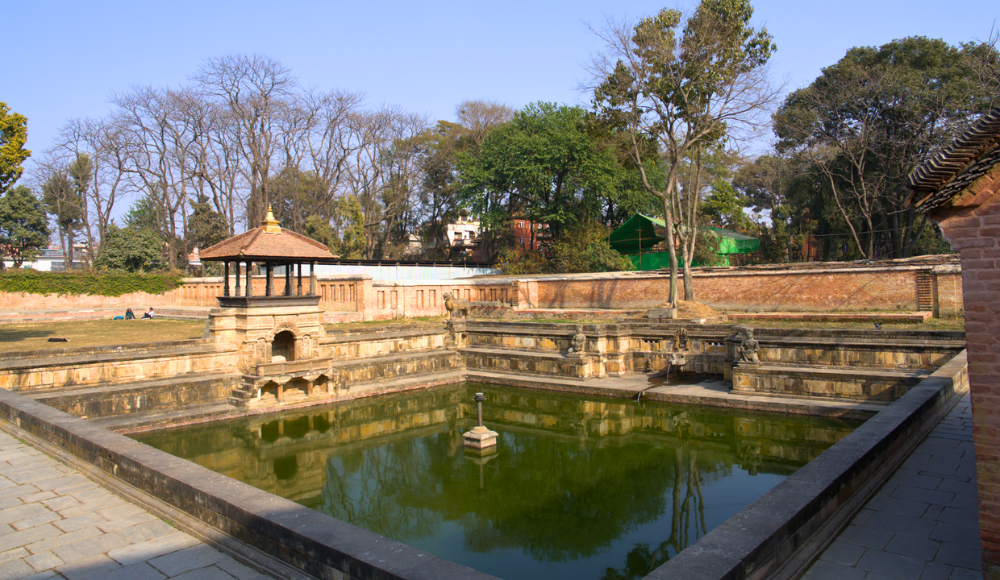
Do keep in mind that the square is closed for various occasions on certain days. Contact your tour guide or related authorities before planning your visit to be on the safe side. Anyway, be informed of the schedule and enjoy your tour!
|
SAARC National |
NPR 150 Per Person |
|
Other Nationals |
NPR 1000 Per Person |
|
For Museum |
Foreigner NPR 50 Nepalese NPR 30 |
There is no entrance fee for Nepalese citizens. The residents of SAARC countries other than Nepal have to pay NRs. 150 for a ticket. Visitors from any other country will be charged NRs. 1000. Children below 10 years old don't require entry tickets. The ticket does not cover the museum and other temples outside the durbar square vicinity (Kumbeshwor Temple, Golden Temple, etc). Foreigners will have to pay extra NRs 50 for each of those places and the charge for Nepalese citizens is NRs 30.
Check the schedule of the square before planning your visit and make sure it's open on the day you want to go. Also, note that the square is closed on certain days for various ceremonies and festivals.
Patan Durbar Square is a religious site, and visitors are required to dress modestly. Remove your shoes and leather accessories before entering if required by the temples and shrines.
Do not touch or climb on any religious artifacts or monuments, and be respectful of the local customs and traditions. Be attentive to your surroundings and follow all required rules.
Be attentive:
All places don’t allow photographs, while some prohibit videos but allow photographs. Make sure to learn these rules to avoid any trouble there. Most places have a board explicitly telling what’s prohibited so look around and enjoy.
The food in Patan is as diverse as its culture and history. So, don’t forget to try out the local foods and beverages. (which cost way cheaper if you visit one of the many local food corners spread out in the alleyways of Patan)
Bring a face mask to protect yourself from dust and pollution. Also carry sunblock, a hat, or sunglasses to protect yourself from the sun. You will also need some water and snacks to keep you going about the day.
The square can get crowded at times, especially during festivals and other events. Be sure to keep an eye on your belongings. Always be on high alert if someone is acting fishy or offering free stuff for no reason whatsoever as it might lead to you getting scammed. It doesn’t always happen but it's better to be safe than sorry.
Some of the smaller vendors and shops in the square may not accept credit cards, so it's a good idea to have some cash on hand.
Patan Durbar Square is a unique blend of culture, history, and art. Indulge yourself at the moment, have a good time, and enjoy the experience.
Patan Durbar Square is an artistic hub with significant cultural, historical, and architectural marvels. It gives a glimpse of the royal history of Nepal with much of its history still intact. It is one of the most visited tourist sites in Nepal carrying huge cultural and historical significance.
The Kumari of Patan, one of the living goddesses of Kathmandu Valley, resides in Kumari Ghar (Kumari Chhe) which is located near the southern Gate of Patan Durbar Square. It is located outside the square but you can easily spot it on the way leading to Pulchowk from Patan Durbar.
Even though it was not completely destroyed, Patan Durbar square suffered substantial damages in the earthquake of April 2015. The square was not open for visitors for a couple of years due to the severe damage and risk of structural collapse. But most of Durbar square has been completely restored now and is open for visitors to explore.
While the square suffered some serious damage in the earthquake of 2015, most of the major sites have been restored. There are still some undergoing restoration but most of the reconstruction has already been completed.
If you want to experience the culture of Patan Durbar Square at its peak, visiting during occasions like Rato Machhindrath Jatra, Gai Jatra, etc is the best option. Otherwise, you can visit Patan any time of the year and still have a fun time.
Patan is famous for its marvelous architecture filled with intricate carvings, colorful paintings, and detailed stone works. That aside, Patan is also known for its cultural celebrations, traditional music, dances, and local cuisine.
Patan city has been around since the 11th century when Laxi Kamdev made Patan the capital city of the Lichhavi Dynasty. However, major architectural reforms were made during the Malla Dynasty, especially in the time of Siddhi Narsingh Malla, turning Patan Durbar Square into what we see today.